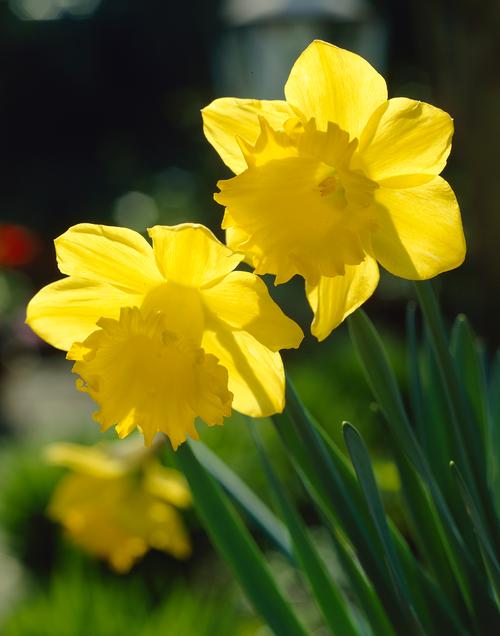Your Guide to Planning, Planting, and Growing Daffodils
Daffodils, also known by their botanical name narcissus, are easy and reliable spring-flowering bulbs. They multiply quickly and return to bloom again each spring, year after year. They are not fussy about soil, will grow in sun or part shade and are not bothered by deer, rabbits and other pesky critters.
Yellow is the most common color for daffodils, but they also bloom in white, cream, orange and even pink. You can choose from several different flower styles, including trumpets, doubles, split-cups, large-cups and jonquillas. By planting an assortment of different types of daffodils, you can enjoy 4 to 6 weeks of these beautiful, carefree flowers every spring.
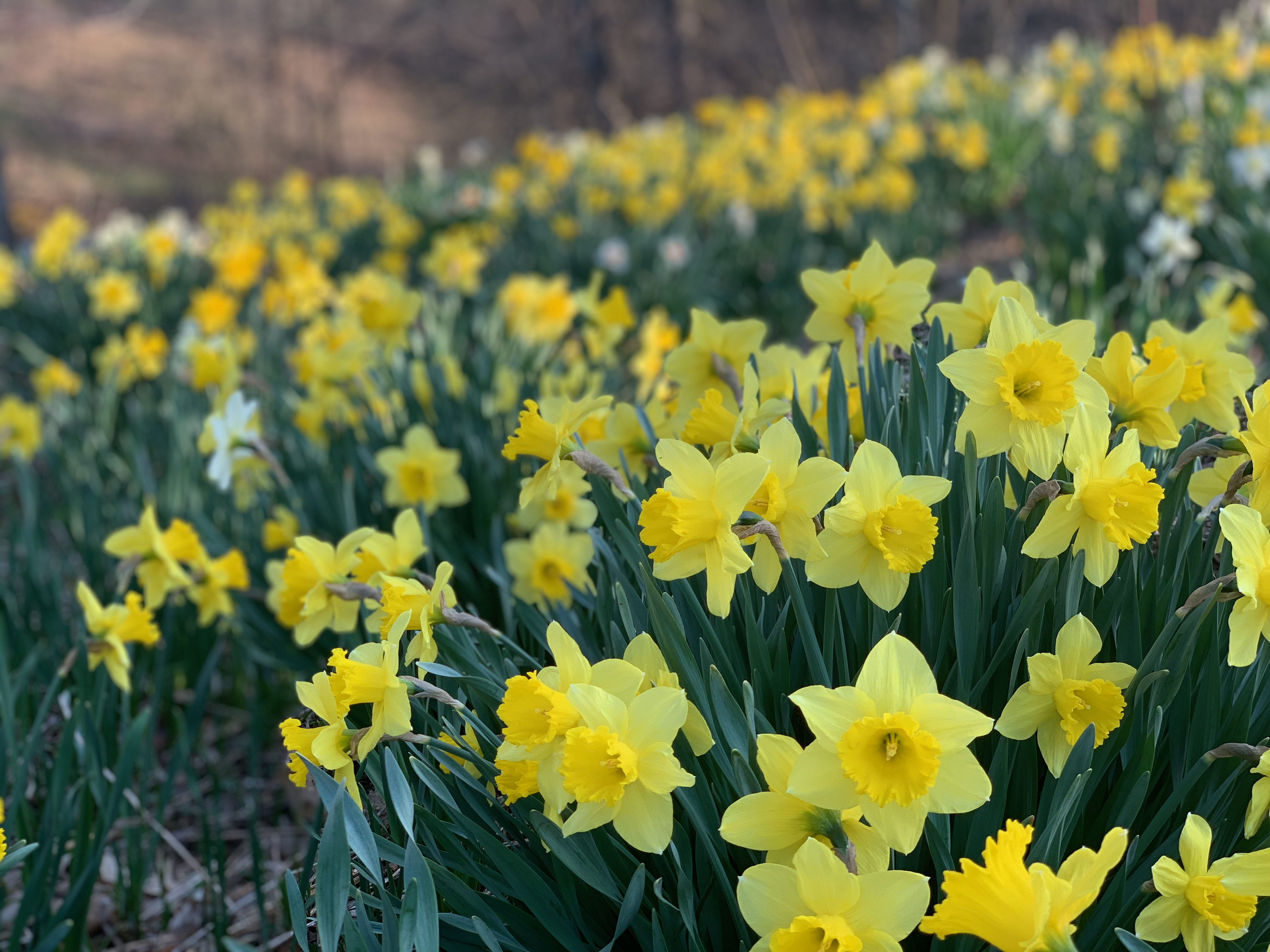
Start with a Better Bulb
It’s easy to see the difference in quality when you compare two daffodil bulbs side by side. As with most flower bulbs, narcissus are graded by size and measured in centimeters around the “waist” of the bulb. Larger, 14/16cm daffodil bulbs (as shown below at far left) will produce more stems and more flowers than smaller, 12/14cm bulbs.
Each year’s crop of daffodil bulbs is a little different, due to weather conditions before and during the harvest. Bulb size also varies by cultivar, with some varieties of daffodils naturally producing larger bulbs than others. We purchase the largest, highest quality bulbs possible and guarantee that you will be pleased with your purchase.
To see our selection of more than 30 daffodil varieties, plus mixes, pairs and collections, click HERE.
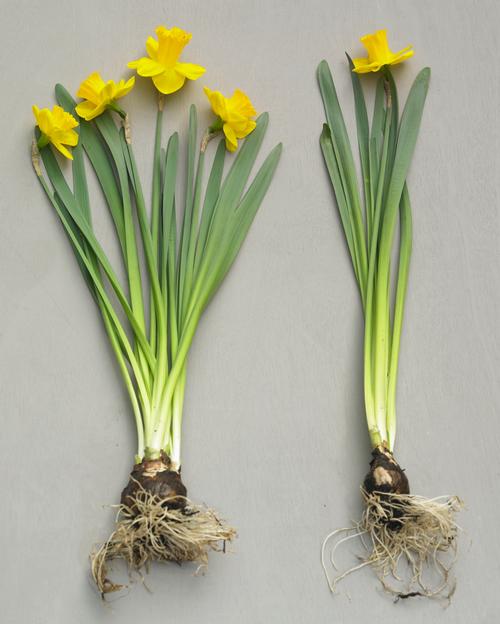
Plan for Success
Sun or Shade: Daffodils will grow in full sun or partial shade.
Hardiness Zone: Daffodils are winter hardy in growing zones 3-8 and will return to bloom again year after year. If you live in a place with relatively warm winters, we recommend reading: How to Grow Spring Bulbs in Warm Climates. Don't know your hardiness zone? Reference the USDA Hardiness Zone Map here.
Soil Conditions: Daffodils are not fussy about soil. They are happy to grow almost anywhere as long as the soil is not soggy.

Where to Plant Daffodils
Front Yards and Entryways: Planting daffodils in front of your house will let you and your neighbors enjoy a welcoming burst of spring color for years to come.
Perennial Gardens: Daffodils come into bloom long before most perennials. Planting daffodils in your flower beds will ensure you have flowers as soon as the weather begins to warm up. Miniature daffodils are a good choice for flower gardens as their leaves are narrower and won't get in the way of newly emerging perennials.
Containers and Window Boxes: Daffodils are traditionally planted in yards and gardens, but they also grow well in containers. This makes it easy to add instant spring charm to porches, patios or small urban gardens. In zones 3-6, potted bulbs need winter protection to keep the soil from freezing. Learn more here: How to Grow Spring Bulbs in Containers.
Cut Flower Gardens: Celebrate the color and fragrance of spring with bouquets of daffodils that can be enjoyed indoors or be shared with friends and family. Planting daffodils in a cutting garden will ensure you always have plenty of blossoms to cut.
Naturalizing: Daffodils are ideal for naturalizing in meadows, at the edge of a woodland, or near ponds and streams. They come back reliably every year and are not bothered by deer or rodents. For recommended varieties, read Best Daffodils for Naturalizing.
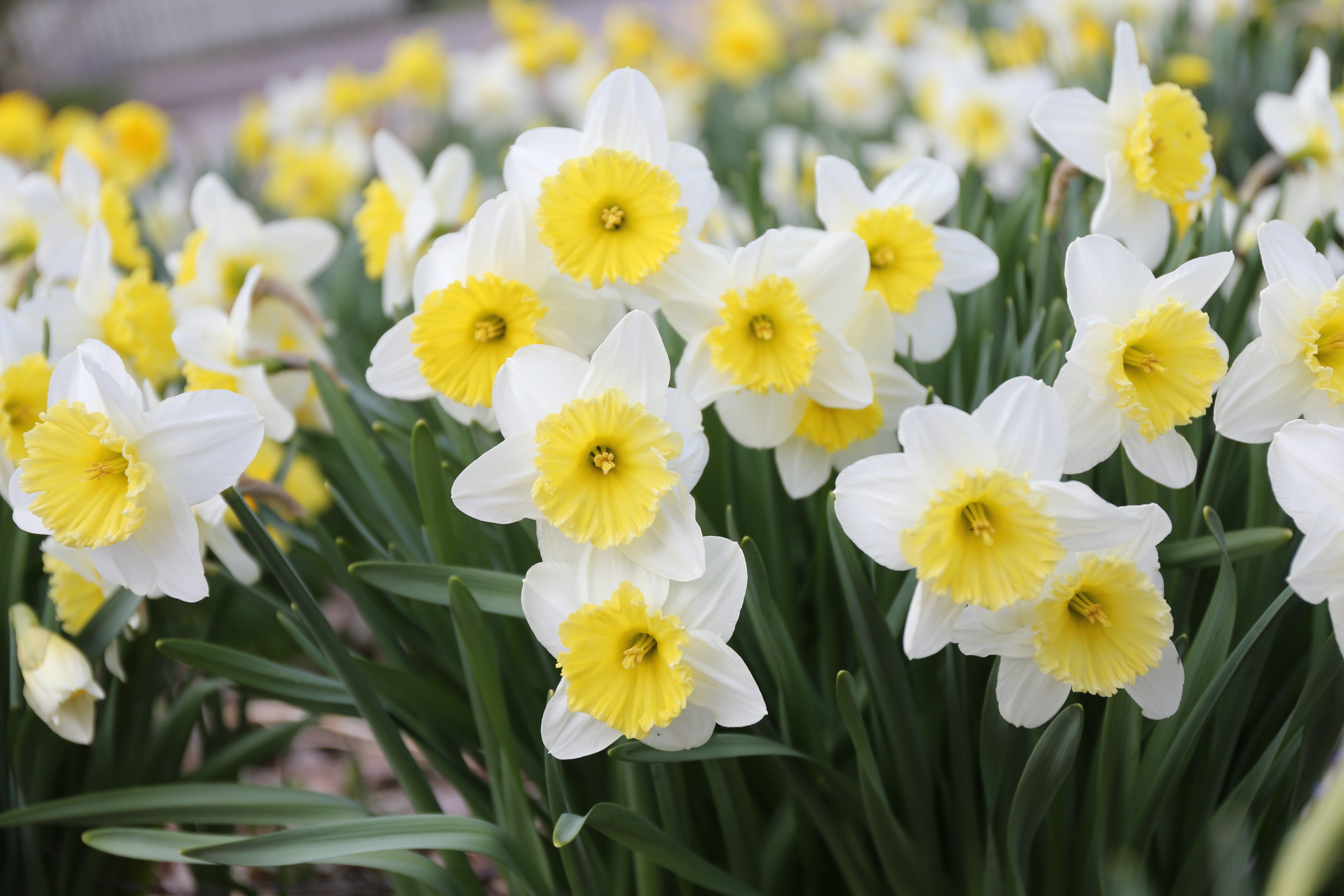
How to Plant Daffodils
When to Plant: Daffodils may be planted from mid-fall through early winter -- any time before the ground freezes. For best results, plant the bulbs within a month after you receive them.
Depth and Spacing: Dig a hole 6” deep. Set the daffodil bulb into the hole pointy side up. Cover the bulb with soil and water the area if the soil is dry. Daffodil bulbs are usually planted about 6" apart. This gives the bulbs room to multiply over time without getting overly crowded.
Planting Tips: Daffodils look best when they are planted in informal groups rather than in straight rows. Clusters of bulbs in a triangular, oval or rectangular shape will have a fuller, more natural look.
To extend the flowering season, plant daffodil varieties that bloom at different times (early, mid and late season). This will ensure new flowers are opening as others are fading. Learn more here: Types of Daffodils to Know and Grow. We also recommend our Planning Guide for Daffodils which shows each type of daffodil and when it blooms.
To watch our video about How to Plant Daffodils, click HERE.

What to Expect in Spring
Daffodil bulbs develop roots in the fall and then go dormant for the winter. Depending where you live, they will begin growing again as early as February or as late as April. The first thing you will see emerging from the soil is the tips of the leaves. Don't worry about snow or freezing temperatures harming the foliage; daffodils are very cold hardy.
When the foliage is about 6 inches tall, flower buds will start to emerge from the base of the plant. The stems will gradually get taller and the buds will get larger and begin showing color. Depending on weather conditions, you can expect this process to take 3-6 weeks.
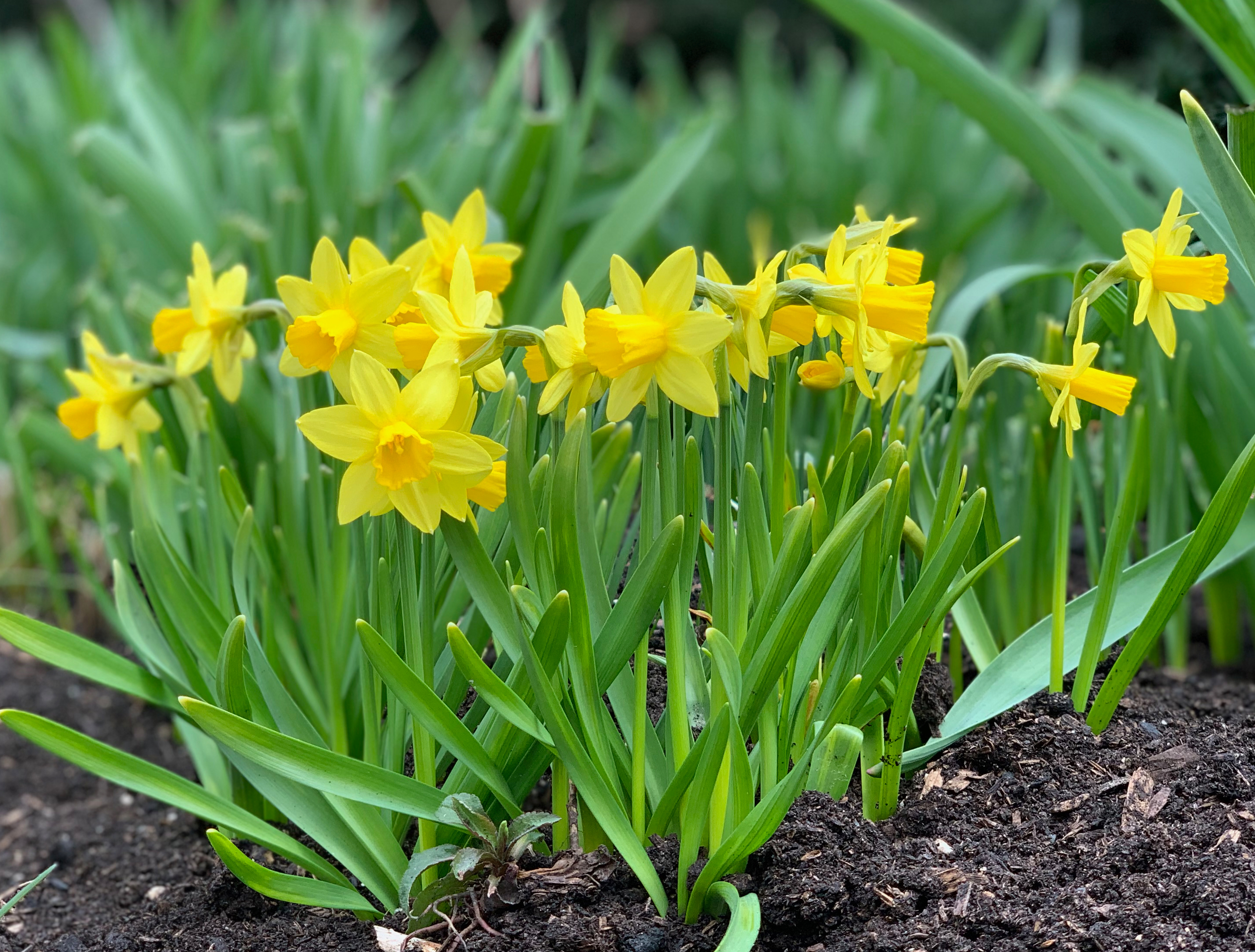
Caring for Daffodils after they Bloom
Daffodils are winter hardy in zones 3-8. Once you plant the bulbs, they will return to flower again every spring, usually in increasing numbers. Here are some tips to ensure your daffodils bloom for many years to come.
When your daffodils finish blooming, you can snap off the spent flower heads. This step is not essential, but it will keep the area looking neat.
Daffodil bulbs use their foliage to create the food energy that's required for another year of flowers. For this reason, it is important to allow the foliage to continue growing until it dies back naturally. Once the leaves are completely limp and yellow, they can be removed with a gentle tug or be trimmed back to soil level.
Most daffodil bulbs will produce one to three stems the first spring after planting. Over time, the bulbs will divide and multiply, giving you more stems and more flowers, for an ever more impressive show of color.
Clumps of daffodils can eventually get large and overcrowded, which can cause a decrease in flower production. If this happens, dig up the bulbs, divide them and replant about 1/3 of the bulbs. Put the rest of the bulbs in another area or pass them along to friends and neighbors. The best time to do divide daffodils is within a month after flowering, while the foliage is still green.

To learn more about daffodils, you may also be interested in reading:
How to Plan a Spring Bulb Garden
Landscaping With Spring-Blooming Bulbs
Best Daffodils for Naturalizing
Planting Fall Bulbs in a Meadow (video)
How to Grow Spring Bulbs in Containers
How to Plant Daffodil Bulbs (video)
Which Spring-Blooming Bulbs are Perennial
How to Naturalize Spring-Blooming Bulbs
Types of Daffodils to Know and Grow
